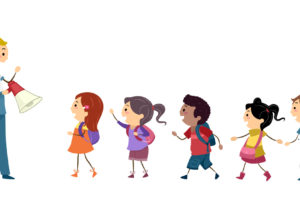The world can be a difficult place at one time or another for just about anyone. Adults face the stressors of work, bills, raising a family; but despite these challenges, adults have the wisdom and strength to persevere through the hard times and make the best of the good. Children are not so fortunate. Unlike adults, their minds are not yet fully developed. Children are just beginning to learn how to deal with stress, and they don’t have the experience of age to assure them that today’s challenges are only temporary. As parents, we want to ensure that our children are able to grow up in safe, nurturing environments that allow them to become the best adults they can possibly be. And we hope that other parents want the same thing: to keep their children safe. Unfortunately, there is no way to gauge what one parent teaches their child versus another. That’s why today, we’re discussing how to raise a child so that he or she doesn’t grow up to be a bully.
How is a bully made?
There are many things that determine an individual’s behavior: their genetics, upbringing and the choices he or she is encouraged to make play a large part in the individual’s overall personality. According to a recent study, however, bullies share at least four common characteristics between them: bullies have immature social skills, they lack compassion/empathy for others, they tend to act on internal impulses and they consume more aggressive media content through TV and video games. The same study has determined that most bullies face similar personal challenges, such as having parents in a strained relationship, child abuse and discipline inconsistencies. As a result, it is believed that bullies are not born, but they are a product of the environment they inhabit. The more negativity that exists in the child’s life, the more he/she is likely to exhibit similar qualities. In an attempt to gain control over his/her life, the child targets perceived weaker individuals to reign over; this is the moment when the child in question makes the transition into a bully.
How to Raise a Child to be a Compassionate Person
The good news is that there are some things you can do to ensure your child doesn’t turn into a bully. It all begins with being an attentive parent…
- Presence: Start by being present in your child’s life. Take an interest in his/her activities, school work and interests.
- Praise: Praise your child for his/her accomplishments, and coach him/her through whatever challenges your child may face.
- Communicate: Take the time to listen to your child. Address any thoughts he/she may have about the things happening in his/her life with your own insightful feedback. A small conversation can go a long way in reassuring your child that he/she is on the right path.
- Teach by example: Your child may be watching you more than you realize. That is why it is important to show your child how to engage with peers, react to stress and enjoy life through your own actions.
- Accountability: Show your child how he/she is expected to behave by setting boundaries and adhering to those boundaries. Such rules could be restricting the time spend on devices – like phones and tablets – or how much TV he/she can watch. You may also wish to establish daily chores that are incentivized by an allowance system. Feel free to get creative with the rules and rewards you offer your child. Once expectations have been set, be sure to follow through with these rules so that your child learns how to be responsible for his/her actions.
- Build positive relationship: If your child has a sibling, encourage them to get along and play together. Let them learn how to communicate with each other in a positive manner. Try to highlight each siblings’ strengths as an individual and avoid comparing what one child does better than the other one. If your child does not have a sibling, try taking your child to a public place where other children gather – such as a park – and let him/her make new friends.
Bullyproof: Part 2
Despite the methods you choose to raise your child, it is impossible to know how other parents are raising their own children. When your child engages with his/her peers, there is always a chance that he/she could encounter a bully. In our next article, we will discuss what you can do to teach your child how to deal with conflicts caused by a bully, both in the real world and in the digital world. To read the next half of our Bullyproof series as soon as it becomes available, bookmark Guard 911’s official blog and follow us on Facebook and Twitter. Thank you for reading!





